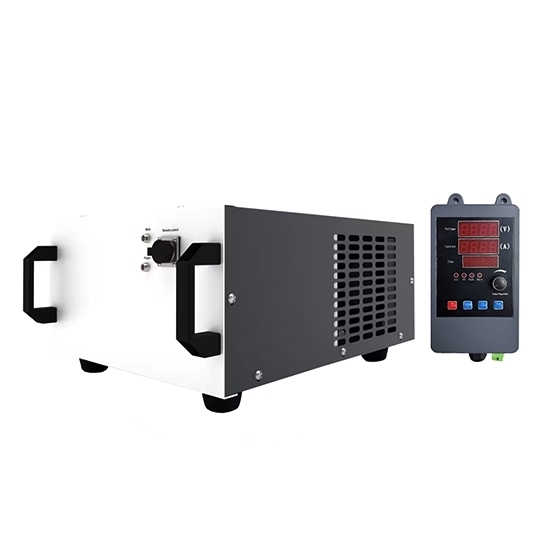
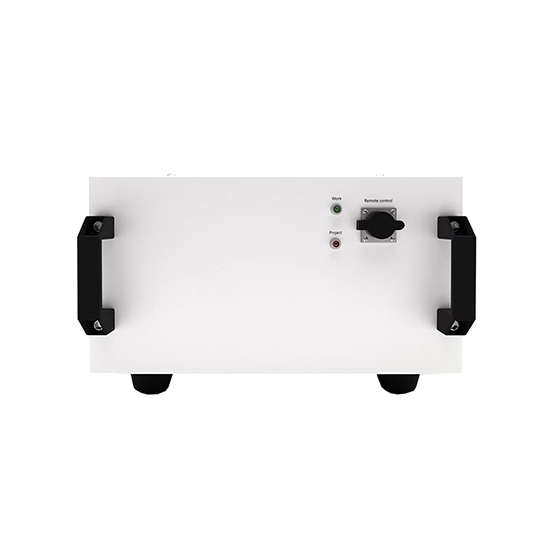
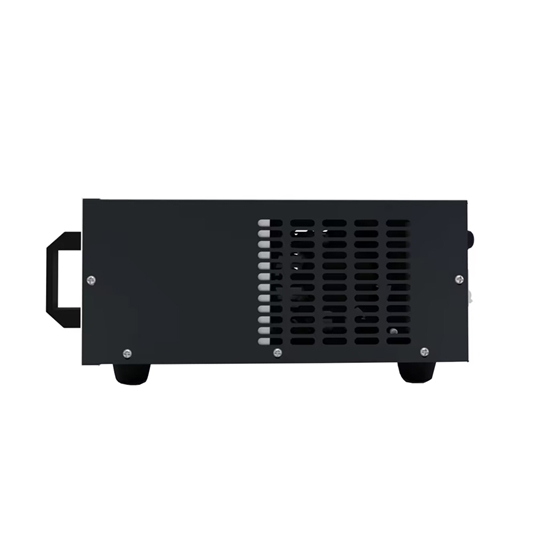
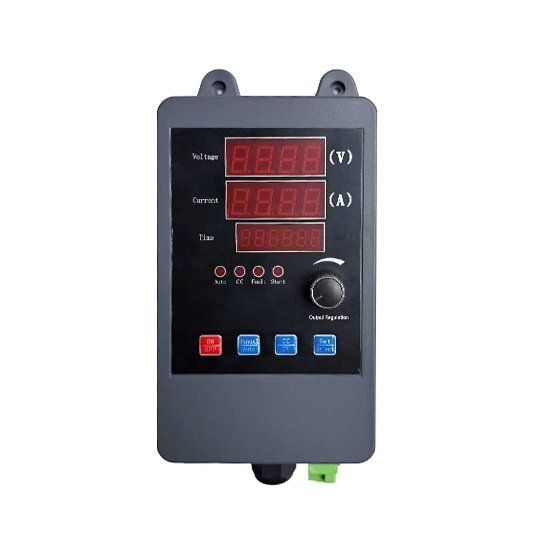
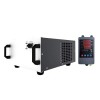
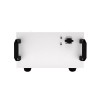
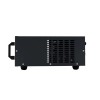
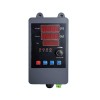
Why buy from us?
Lorem Ipsum is simply dummy text of the printing and typesetting industry.
Ask a Question About This Product
- Stock: In Stock
- Model: KOLAUT-HI-300
- Weight: 1.00
- SKU: KOLAUT-HI-300
Available Options
Air cooling 0-300A adjustable plating rectifier machine used in 3-phase 380V/ 480V AC input and 24V/ 36V DC output, other desired voltages customized, features with complete protection functions, 24 hours operation at full load, energy saving more than 20% because of higher conversion efficiency, especially low DC output voltage.
Application: This kind of plating rectifier is mainly used in brush plating process, suitable for repairing plated workpieces with defects, depositing different metal patterns on metal surfaces and electrolysis degreasing and plating process etc.
Specification
| Model | KOLAUT-HI-300 |
| Input Voltage (Optional)* | Three phase AC 380V/ 400V/ 415V/ 440V/ 460V/ 480V (220-1000V voltages are customizable) |
| Input Frequency | 50Hz/60Hz |
| Output Current | 0-300A (continuously adjustable by 1A) |
| Output Voltage (Optional)* | DC 0-12V/ 0-18V/ 0-24V/ 0-36V/ 0-48V (8-500V voltages are customizable) Note: Output voltage is adjustable by 0.1V. |
| Output Frequency | 15kHz |
| Output Current Stability | ≤1% |
| Output Voltage Stability | ≤1% |
| Efficiency | ≥92% |
| Power Factor | ≥0.9 |
| Operation Mode | Remote control or manual control |
| Module | IGBT module |
| Cooling Method | Air cooling |
| Start-up Postponing Time | ≤10s |
| Limiting Current Value | Io±5A (Io is the rated current) |
| Limiting Voltage Value | Vo±5A (Vo is the rated current) |
| Signal Interface (Optional)* | RS485, PLC 0-10V, 4-20mA |
| RS485 Interface Function | Can be used to monitor parameters, control voltage & current values, and remotely start/stop the rectifier. |
| Control Box (Included) | Can adjust the output voltage, current and time, with a standard 0-30m remote connection cable. Longer cables can be customized! |
| PLC Touch Screen (Optional)* | Plating rectifier connects with PLC touch screen by RS485 interface to display/adjust the voltage, current and time. |
| Modulation Mode | PWM control |
| Complete Protection Functions | Over current, over voltage, over heat, short circuit, phase lack, input undercurrent protection, over temperature, diode defect... |
| Protection Grade | IP20 |
| Ambient Temperature | -10℃-50℃ |
| Relative Humidity | ≤80% |
| Size | 520*370*220mm |
| Net Weight | 46kg |
| Certification | CE, ISO |
| Warranty | 12 months |
| Packing Included | 1 x Three Phase Plating Rectifier 1 x Remote Control Box 1 x 0-5m Cable |
Plating Rectifier Main Technical Features
- Operation mode: Remote control or manual control is optional.
- Output control mode: One-way pulse and two-way pulse output control for optional.
- Constant output control mode: Constant current and constant voltage control modes can be selected.
- Soft start time: Soft start working time can be set in the range of 0-200s.
- High control accuracy: Control accuracy ≤ ± 1%.
- Rectification mode: IGBT inverter soft switch rectification, PWM pulse step modulation, IGBT chopper control mode.
- Pulse pacing frequency range: 1000-8000Hz.
- Man-machine operation interface: PLC color touch screen.
- Main controller: DSP microcomputer digital trigger control, PWM pulse width adjustment control, pulse phase shift resolution ≤1μs.
- Main protection functions: AC power phase loss, overvoltage, undervoltage, fast fuse blowing alarm and circuit breaker protection; output overcurrent, current limit protection, output short circuit, instantaneous overload protection; IGBT switch module, fast rectifier components, switching rectifier transformer, busbar copper bus overtemperature and overheating, fan overheating or water pressure is too high/low, blocking PWM trigger pulse protection.
- Communication method: CAN bus, PROFIBUS, ETHERNET industrial Ethernet, RS485, and RS232 optical fiber communication can be configured according to customer needs to achieve remote group control or monitoring.
- With 1-5 stages of constant current slow rise and slow down stage number control, each stage oxidation current and oxidation time can be set separately.
- Real-time recording of multiple process parameters and real-time curves such as forward and reverse current / voltage, pulse current/voltage amplitude, pulse duty cycle, pulse frequency, oxidation time, bath temperature, etc.
- Remote operation control box: The remote operation control box can be configured according to the customer's site conditions, the plating rectifier machine and the remote control box are separated to prevent, the field operation is more convenient, and the rectifier's corrosion protection is significantly enhanced.
- 5 sets of process parameters can be stored or recalled to shorten the processing programming time.
- Can be connected to the computer through the RS485 communication interface, or stored in the U disk and transferred to the computer, which is convenient for the customer to save the file and analyze the product process quality of the oxidized workpiece.
- Workpiece coating quality: Compactness, smoothness and corrosion resistance are significantly better than the ordinary plating process.
Tips: 3 things should be known when using a pulse-plating rectifier
1. Distance between pulse plating rectifier and plating tank
In order to ensure that the pulse current waveform is not distorted and has little attenuation when it is introduced into the plating tank, the distance between the pulse plating rectifier and the plating tank is preferably 2-3m during installation, otherwise, it will have a greater impact on the trailing edge of the pulse current waveform and the plating will not achieve the expected effect.
2. Wire connection method of cathode and anode
The wire connection method of the DC power supply is not suitable for the connection of the pulse rectifier. The output connection of the pulse plating rectifier. It is hoped that the inter-electrode capacitance of the two wires can offset the transmission inductance effect of the wire. Therefore, the best method for the cathode and anode wires is a twisted pair After that, it is led to the edge of the plating tank, thereby keeping the pulse waveform unchanged.
3. Selection of wires
Because it is a pulse power supply, in order to avoid the trend effect, when selecting the wire, you should choose a multi-strand core wire as the connection line between the pulse power supply and the plating tank. The multi-strand core wire is twisted, and the line capacitance between it can offset its inductance effect.
The specification of the wire must meet the rated current through it, because the current density of the pulse current is much larger than the average current density, so the current thermal effect generated by the current of the pulse power supply must be considered to ensure the minimum attenuation of the pulse power supply to the plating tank.



















